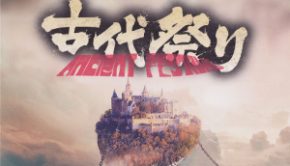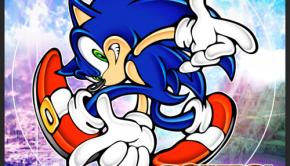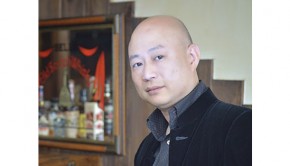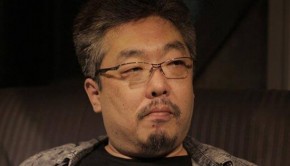Takayuki Nakamura Profile
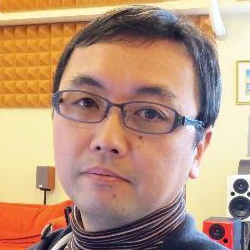 |
Also Known As: 中村 隆之 (なかむら たかゆき) / T.N / Nakataka |
| Date of Birth: July 19, 1967 (Tokyo) |
|
| Residence: Tokyo |
|
| Game Works: Virtua Fighter, Lumines, Ninety-Nine Nights |
|
| Official Site: Japanese Site |
History
| Organisation | Type | Tenure | Role |
| Sega | Game Developer | 1989 – 1990 | Composer, Sound Designer (Part-Time) |
| Sega (AM2) | Game Developer | 1990 – 1996 | Composer, Sound Designer |
| Sega (AM2) | Game Developer | 1994 – 1996 | Sound Director |
| DreamFactory | Game Developer | 1996 – 1999 | Composer, Sound Designer, Sound Director |
| BrainStorm | Music Production | 1999 – | Founder, President, Composer, Sound Designer, Sound Director |
| BrainStorm Records | Record Label | 2005 – | Founder, President, Artist |
| GE-ON-DAN | Artist Collective | 2009 – 2011 | Member |
Biography
Takayuki Nakamura is a prolific game composer and sound director best known for his work on a range of puzzle and fighting titles. Born on July 19, 1967 in Tokyo, Nakamura listened to a wide range of music from an early age and learned to play the guitar and piano. He was also fascinated by technology, having experimented with personal computers and radio broadcasting as a teenager. He went on to study a four-year degree at the Department of Commerce at Meiji University. While he wasn’t passionate about his studies, he spent much of his free time performing guitar in an amateur jazz fusion band with his friends, channeling influences from artists such as Jeff Beck and Chick Corea. He also taught himself how to compose through this band and purchased a Roland MC-300 sequencer after getting a part-time job. As he was approaching graduation, he searched desperately for jobs and learned that several game companies were hiring for composers. Though he didn’t know much about games and their music at the time, he found the soundtracks for Hang-On and OutRun impressive. He therefore sent a demo tape to Sega, who hired him as a part-time sound creator in September 1989 while he completed his studies.
In his debut as a part-timer, Nakamura penned several compositions and designed the sound effects for the Arcade’s Columns II: The Voyage Through Time. While his compositions were simple and repetitive, they nevertheless matched the pace of the puzzle gameplay and complemented the Arabian-inspired visuals. He reflected his musical inclinations much more as the assistant composer of ESWAT: City under Siege, writing cool funk compositions using frequency modulation. The artist also worked on both the Genesis and Game Gear versions of Moonwalker; he made numerous technical considerations in order to preserve the charm of Michael Jackson’s hits on limiting hardware, while also penning a few tracks of his own. As a self-professed technophile, Nakamura found the technological aspects of such projects just as fascinating and rewarding as the musical ones. Having clearly demonstrated his competence, Nakamura was taken on as a full-time composer after completing his studies in 1990. He wrote suitably light music for the video game adaptations of Astérix and Dick Tracy, between programming the iconic soundtracks for Streets of Rage and The GG Shinobi on behalf of Yuzo Koshiro.
Transferred to work at the iconic arcade division Sega AM2 in 1991, Nakamura ended up writing several iconic scores for racing titles. His soundtrack for F1 Exhaust Note captured the intensity of the race track with rhythmically compelling, hard-edged guitar riffs. Though the tracks were few in number, they were each very well-implemented for their time. After handling the composition of Where’s Wally? and sound programming of Stadium Cross, he wrote the soundtrack for OutRunners alongside fellow Sega legends Takenobu Mitsuyoshi and Hiroshi Kawaguchi. Having loved the soundtrack for the original, the artist was delighted to be able to contribute to its sequel. Nakamura demonstrated particular flair throughout the new stage themes, offering soft nu jazz soundscapes on “Blow Your Cool”, colourful big band stylings on “Looking for the Rainbow”, and dynamic rock infusions on “Sonic Control”. This title also marked his first role under the direction of Yu Suzuki, who communicated his clear vision throughout the production. Nakamura was also responsible for the sound direction for Ghost Hunters, a larger-scale attraction that took players through a haunted house.
In his breakthrough work, Nakamura subsequently wrote the entire soundtrack for 1993’s Virtua Fighter, Sega’s answer to Street Fighter II. He contrasted the game’s characters with numerous upbeat melodic stage themes, spanning an alley-style fighting anthem for Jeffry, the more feminine pop-influenced portrayal of Sarah, to the traditional Japanese stylings for Kage. The hit soundtrack was published by Toshiba EMI, together with an arranged version performed by B-Univ. After the original game emerged a success, Nakamura returned to co-compose a more aggressive rock-oriented soundtrack for Virtua Fighter 2 alongside Takenobu Mitsuyoshi, before penning a few youthful tunes on Virtua Fighter Kids. He also directed the sound team of the Saturn adaptations of Virtua Fighter, Virtua Fighter 2, and Daytona USA, all of which featured richer arrangements and samples than their originals. He additionally directed the Virtua Fighter CG Portrait Series, an eleven-part CD-ROM collection featuring renders of popular characters from the series. He concluded his time at Sega by writing approximately half of the soundtrack for Virtua Fighter 3, combining the series’ trademark stylings with more progressive approaches.
Nakamura decided to leave Sega in August 1996, stating that he no longer found working there “charming or interesting”. He felt particularly concerned by the company’s decision to create a dedicated sound subsidiary, since he preferred working directly alongside game designers. To continue doing this, he became the sound director of DreamFactory, a small independent developer headed by Virtua Fighter’s lead designer Seiichi Ishii. The artist was initially responsible for all the music, sound effects, and sound programming of Tobal 2, a fighting title published by Square. Rather than copy the approach of typical fighters or the original game, Nakamura took a more personal direction — offering a beautifully implemented blend of catchy funk licks and warm electronic synthpads inspired by Kraftwerk and Underworld. He went on to write the soundtrack for the arcade and console versions of Ehrgeiz. Whereas the main fighting mode featured energetic electronic beats, the RPG mode was filled with diverse styles and moods. Having impressed Nobuo Uematsu on this project with his Final Fantasy VII remixes, Nakamura was subsequently invited to write a song for the original album Ten Plants 2: Children’s Songs.
In October 1999, Nakamura made the daring leap of establishing the independent music studio BrainStorm to pursue further roles in the industry. Having developed a strong reputation in the industry for his fighting soundtracks, he was soon invited to pen scores for Midas’ Fighting Fury and LightWeight’s Kengo: Master of Bushido. In both cases, he blended the dark sounds of feudal Japan that reflected the scenario with light rock stylings that had more mainstream appeal. He wrote relatively little music for the latter, instead creating a solemn mood through silence and ambient sound effects. Nakamura also took richly hybridised approaches to the critically panned Kabuki Warriors and the sequel Kengo: Legacy of the Blade, using cutting-edge sample libraries and custom set-ups to maximise the final results. He additionally captured the atmosphere of the boxing ring by writing the music and sound effects for WWF Raw and its sequel. While working on such titles, Nakamura also gained experience working on handhelds. His responsibilities included programming Motoi Sakuraba’s soundtrack for Star Ocean: Blue Sphere, and writing music for Guilty Gear Petit and its sequel, The King of Fighters EX: Neo Blood, and Naruto: Ninja Council. He also handled the event sound effects on Xenosaga Episode II.
Through the success of such projects, Nakamura was able to expand Brainstorm into a music production company, taking on several new staff to help him in sound design, composition, and engineering. Appointed as sound director of GameCube’s Tube Slider and Custom Robo, Nakamura captured the tone of both titles; whereas the former was filled with euphoric electronica and realistic sound effects, the latter took a more playful, anime-inspired approach. The artist also led the sound production for Pride FC: Fighting Championships, offering a combination of original and licensed music, and the video game adaptation of Crouching Tiger, Hidden Dragon, where he gained experience in voice recording and editing. He gained further new experiences on the Korean-developed browser-based MMORPG Ultimate Academy RAN Online, writing a portion of the music, and also inevitably returned for Kengo 3, offering a more lavish score that was celebrated with a two disc album release. Reflecting his wider industry reputation, Nakamura was also offered a part-time two year lectureship at the Konami School and taught students about the principles of game audio.
In 2004, Nakamura came to international attention as the lead composer and sound designer of the successful PSP launch title Lumines: Puzzle Fusion. Designed by fellow Sega veteran Tetsuya Mizoguchi, the title provided a unique spin on block-based puzzle gameplay with its emphasis on sound and light patterns. With sound being at the centre of the gameplay, Nakamura was closely involved in the game’s development from start to finish. The skins and music tracks for the project were designed simultaneously by art director Katsumi Yokota and sound director Nakamura. Both of them exchanged ideas throughout the process to achieve a balanced approach. Reflecting Nakamura’s musical inclinations, the tracks meshed influences from jazz, electronica, and rock into soothing, abstract, yet stimulating soundscapes. The sound effects were also carefully integrated to fit the background music. Nakamura personally adapted the music from the game into a 40 track album, Lumines Remixes, and established a personal record label to print it. The artist has described “playing Lumines is a sensation like playing a musical instrument on a fundamental level”.
With these soundtracks emerging as major successes, Nakamura was given an outsourcing contract to work on further productions by Q Entertainment. He produced a memorable and quirky soundtrack for the DS puzzler Meteos together with BrainStorm’s Kaori Takazoe; each of the game’s thirty stages featured a unique piece of music that reflected the unique environments of each planet. As sound director of 2006’s Ninety-Nine Nights, the artist worked with a team of composers, sound designers, and voice actors to reflect the grand scale, intense action, and mystical storyline of the game; the soundtrack was a diverse one, combining cinematic main themes and epic classical remixes with Nakamura’s own exotic and militaristic compositions. With the help of state-of-the-art equipment and software, including the Vienna Symphonic Library, Nakamura produced a score that matched the quality of the visuals. The soundtrack received both domestic and international releases from two of the biggest game music labels. Nakamura further worked under Mizoguchi to produce the warm, eclectic soundtrack for Gunpey DS. On this title, he also helped to create a sequence mode called “toy box of sounds”, enabling real music composition.
Beyond his work at Q Entertainment, Nakamura has worked on a range of other titles since 2006. The artist scored DS iterations of the Dynasty Warriors, Custom Robo, and Populous franchises — in each, staying faithful to each long-running series’ sounds while considering the specifications of the handheld and fulfilling specific requests from the directors. He has helped to adapt the long-running manga JoJo’s Bizarre Adventure for PlayStation 2 and Fist of the North Star for PSP. In smaller roles, he reflected the casual tone of the WiiWare titles Lonpos, Shanghai Wii, and Pop-Up Pursuit with short but functional soundtracks. His jazz and electronic styles also proved to be a solid fit to edutainment titles such as IQ Suppli, its sequel, and Business Etiquette. Nakamura was also responsible for the music data and vocal recordings on AQ Interactive’s The Song Generation, a rhythm game that homaged pop songs from the 70s and 80s, between writing music for Alteiland Women’s Volleyball Championship. The expansion of BrainStorm no doubt enabled him to balance work on so many titles. He has also produced a large library of free sound effects, SoundIcons, for use in video games, films, and more.
Nakamura inevitably returned to produce the soundtracks for Lumines Live! and Lumines II. In contrast to the original game, skin design took precedence over audio on these titles, allowing for a greater variation of musical approaches. Whereas the Xbox Live title combined new and old compositions mixed a 5.1 surround sound environment, the sequel emphasised music that was more tangible and accessible than the original. Nakamura selected and adapted a handful of tracks from each score for the Lumines Remixes Winter and L.II Remixes albums. He also supplemented the downloadable content for these games with various tracks. The artist returned once more for Lumines Supernova; always at his most inspired when deadlines are lax, Nakamura appreciated having the time available to experiment with new sound materials on this project and added particular depth by incorporating voice samples. He also returned for the soundtracks of Meteos Online and Meteos Wars, building upon the musical concept of the original game. In his latest role for Q Entertainment, Nakamura has produced a vibrant but retro-inspired soundtrack for Peggle: Dual Shot, published by PopCap.
While Nakamura’s game projects keep him extremely busy, he occasionally participates in wider productions. He helped to create the high-profile interactive art and music exhibition Songs of Anagamura in collaboration with designer Kazutoshi Iida. The light-hearted and catchy soundtrack for the exhibition combined vocaloid performances with contemporary stylings. Nakamura proudly released the results as a mini-album through his own label. With his colleagues at BrainStorm, he has also developed the Graph Arpeggiator line of sound tools to make music production more efficient and user-friendly. Revealed at the Tokyo Game Show 2012, the latest in this line — Graph Arpeggiator 3 — enables users to produce original and imaginative sounds by drawing a polygonal line graph in conjunction with a VSL. He also produced an experimental piece of software nagi to aid victims of the Tohoku Earthquake; this software takes in sounds from the environments and transforms them into calming waves on loop. The artist has also worked on an independent play and penned a track for the Korean record 2step Articlez.
Despite being absent from Q Entertainment’s latest productions, Nakamura and his team have continued to have major roles in a range of titles. His most significant project in recent years was 2011’s Dream Trigger 3D. As with the Lumines series, sound was not a passive accompaniment in this title and instead drove forward the gameplay; the intensity of the music reflected the amount of on-screen action, while radar revealed the locations of hidden enemies. The majority of the soundtrack featured vibrant electronic remixes of classical staples. In other roles, the artist enjoyed writing the catchy soundtracks for Disney’s Stich Jam and its sequel, both rhythm games featuring the titular alien from the Lilo & Stitch movie. On behalf of FuRyu, he has additionally wrote light-hearted music for the Doreamon’s 3DS adventure and coordinated the sound effects production for Unchained Blades and its sequel. He has also provided family-friendly soundtracks to Tokyo Friend Park II and The Family Party. His latest role is the ball-meets-terrorist title Team Grand Slam, which will give him the opportunity to expand into the smartphone sector. Nakamura has emerged as one of the most significant pioneers of game audio.
References:
– Various Game & Album Credits
– VGMdb Discography
– Official Site (Japanese)
– Interview with RocketBaby (English, July 1999)
– Interview with 1UP (English, July 2006)
– Interview with Siliconera (English, February 2008)
– Interview with Original Sound Version (English, September 2009)
– Interview with Gamasutra (English, March 2009)
© Biography by Chris Greening (April 2013). Last updated on April 13, 2013. Do not republish without formal permission.
Posted on April 13, 2013 by Chris Greening. Last modified on March 21, 2014.

